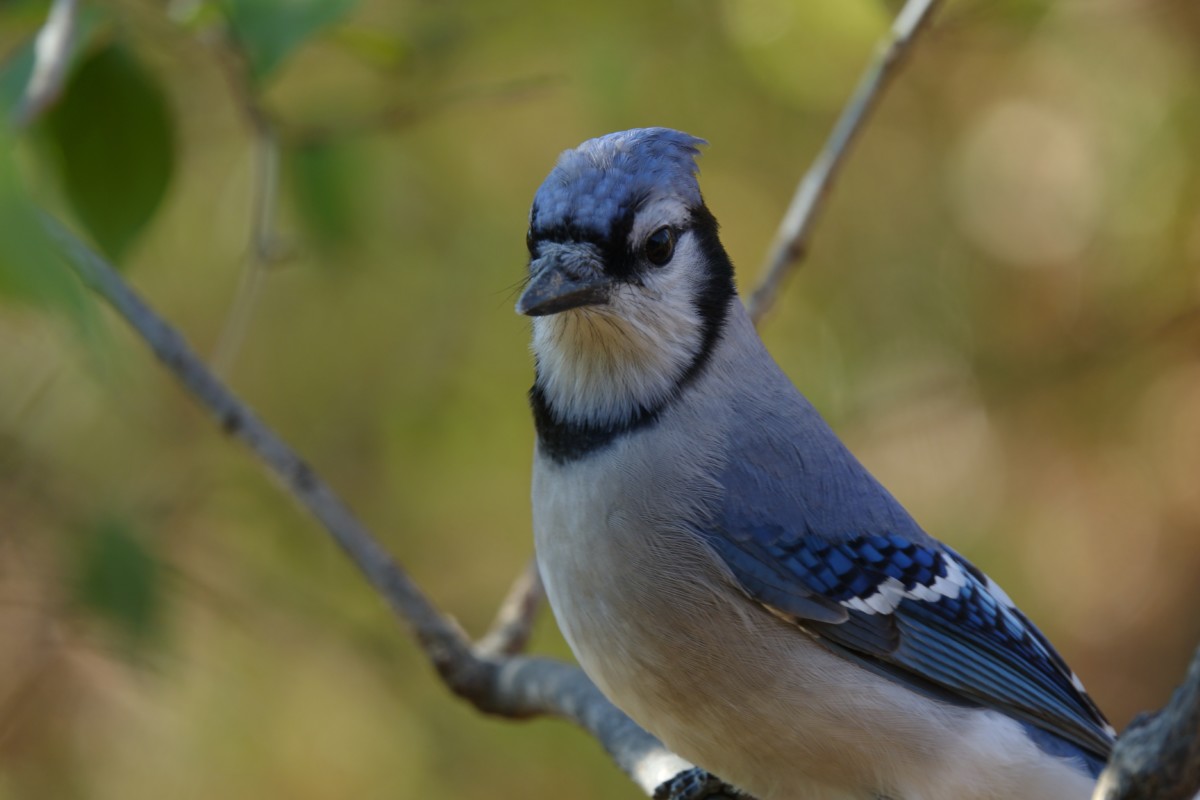
As a backyard bird enthusiast, I’m sure you’ve stood at your window, watching a handful of birds nibbling away at your feeder, only to see them scatter when a squawking blur of blue lands among them. Despite their striking plumage, blue jays seem to have garnered a bad reputation for being a bully.
I assure though; it’s all a big misunderstanding.
By learning a bit more about these “backyard bullies,” hopefully, we can bring a little peace to your feeders and a new appreciation for these birds in blue.
Why Are Blue Jays Such Jerks?
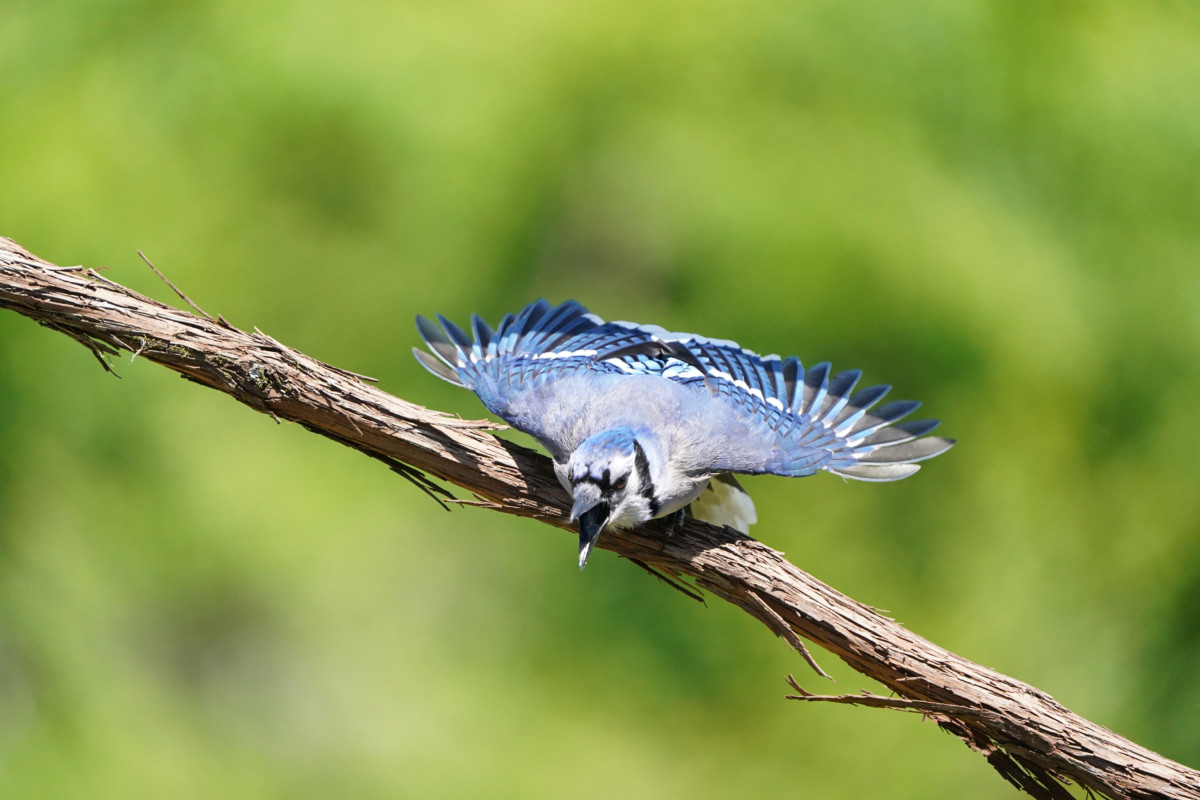
When you stop and think about it, that’s a pretty funny question for us to be asking. Would any of us call an orca a jerk for eating a seal or a few penguins? Or a lion a bully for picking off a zebra for dinner? No, it’s their nature. Yet, it’s not uncommon for us to attribute human feelings and characteristics to wild animals. (This habit is known as anthropomorphism.)
To understand their actions, we need to learn more about the nature of blue jays.
Would it surprise you to know that blue jays are incredibly social and have complex relationships with each other? Most of the year, they don’t present much of a problem to the backyard bird enthusiast. Yet, when winter comes and food is harder to come by, we often get a front-row seat to their very normal behavior. And for us, it can be a bit unsettling.
They will form tight-knit bands to protect food sources, keep a lookout for predators, and even band together and attack larger predatorial birds, like hawks or owls.
Blue jays will often keep watch so another can eat in relative safety at the feeder. Granted, they might send a few finches flying to do so.
Their keen sense of protecting their own from predators makes them a valuable member of any backyard with a bird feeder or two. Smaller birds will also react to a blue jay’s warning call; in that way, everyone stays safe. Ultimately, they inadvertently protect all the birds present, not just themselves.
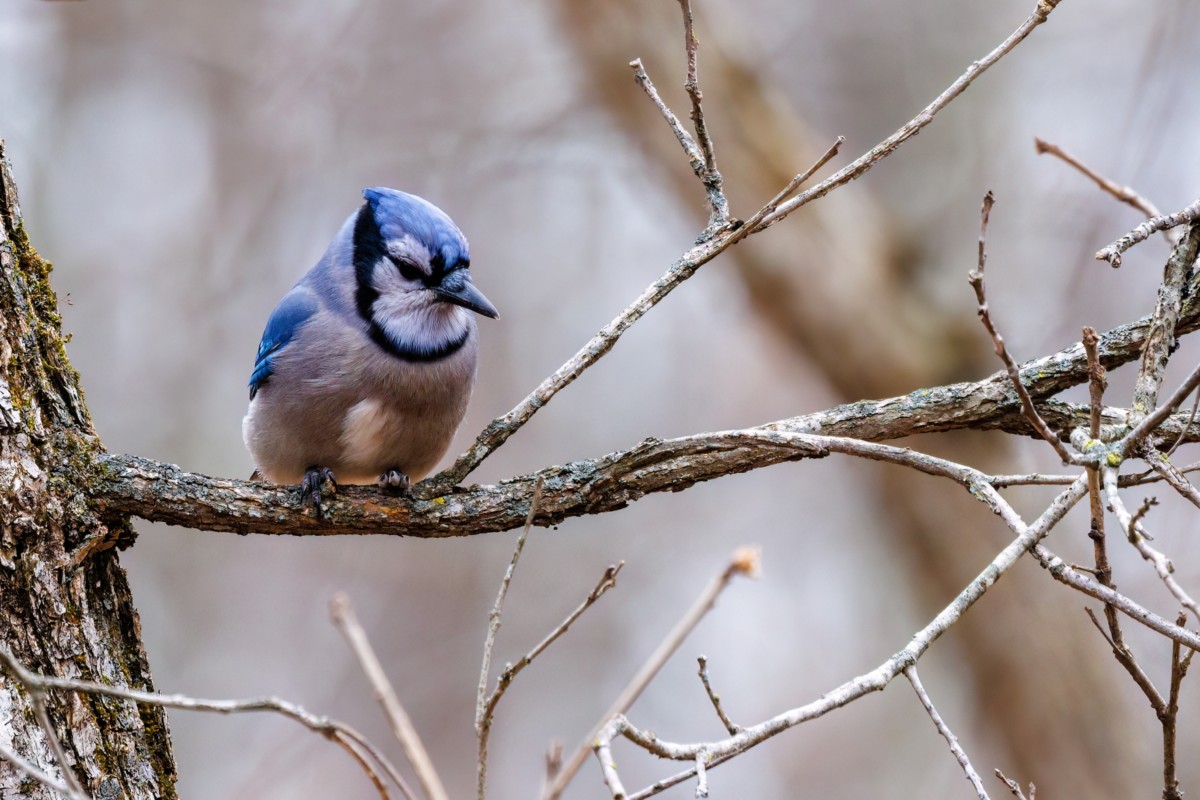
Busting an Old Myth
Somewhere along the way, blue jays picked up the reputation for eating smaller birds or nestlings. Perhaps this helped with the bullying reputation.
While technically, this is true, it’s uncommonly rare for them to do so. Most of the time, it’s to eat an already dead bird, like a nestling fallen from the nest.
Blue jays will attack other small birds that come near their food. It’s not because they are trying to kill and eat them; they’re just defending their food source.
How to Keep the Peace
By making a few changes, you can ensure that bullying protective blue jays are welcome and all the visitors to your feeder get fed. Because, in the end, we want to encourage a balance in our little backyard ecosystem.
1. Use Feeders Made for Smaller Birds
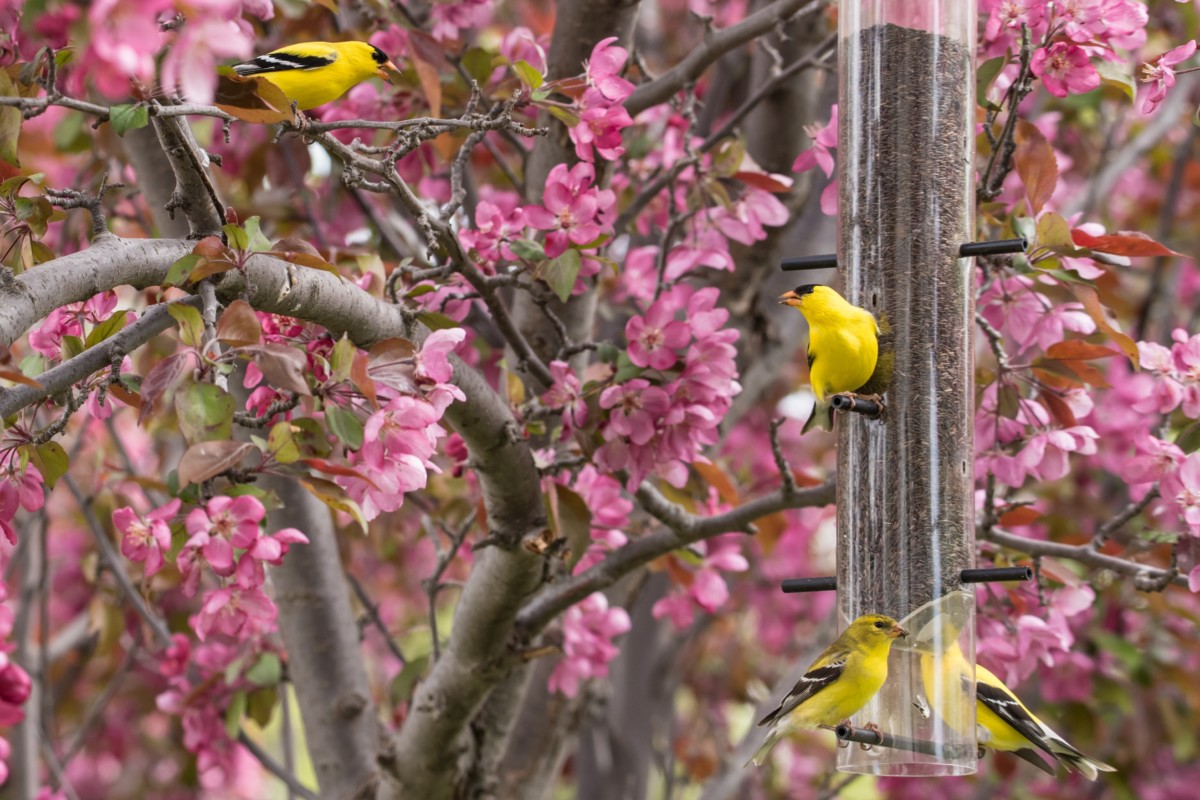
One of the best ways to ensure small birds, like finches, have a place to eat without being driven off is by choosing a bird feeder made exclusively for smaller birds. There are some truly great designs available these days.
Tube Feeders

Tube-style feeders are great for finches, chickadees, and other small birds. Larger birds, like blue jays, can’t eat from them. Blue jays are too big and can’t hold on to the tiny perches. If you want to be sure blue jays can’t get to the seed, choose a tube feeder with perches located directly above the holes for the seed. Blue jays are too big to bend down and eat from the holes they are sitting above.
Caged Tube Feeders

Opt for a caged tube feeder if you really want to give small birds a safe and secure place to eat. The outer mesh wire allows smaller birds in but is too big for larger birds to get through. It also keeps squirrels out too.
Weighted Perch Feeder

These bird feeders have weighted pedals or perches and will close if a heavy bird lands on them. Lighter birds can land easily on the perch and eat without triggering the closing mechanism.
2. Encourage the Crowd You Want with the Right Food
Blue jays love larger seeds, like sunflowers. They enjoy peanuts and cracked corn as well. If you’re feeding a wild bird seed mix with these ingredients, you will attract a crowd with the larger beaks needed to eat them.
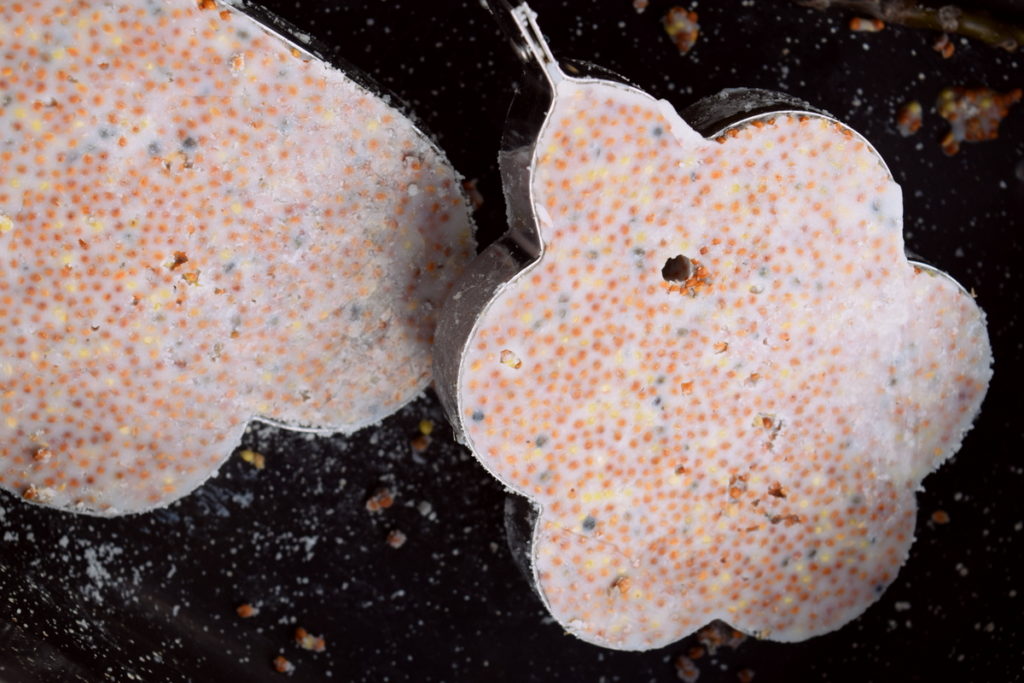
Choose seeds such as nyjer and safflower to discourage hungry, aggressive blue jays.
3. Mix It Up
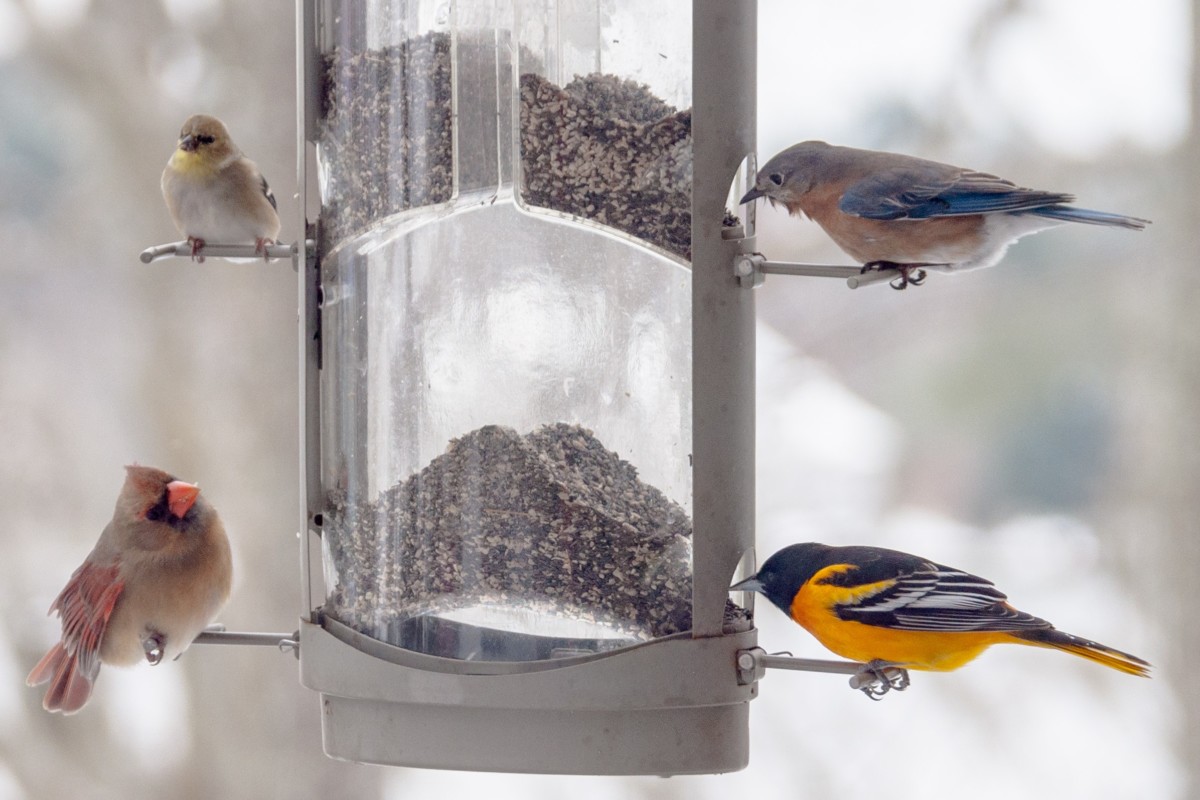
Diversity is key in any ecosystem. Use several different feeder styles, some for small birds and others for large birds. Place them around different areas of your yard, well away from each other. Use different feeds in each one. You may be surprised at who likes what feeder and which seed.
4. Cater to Your Blue Jay Population
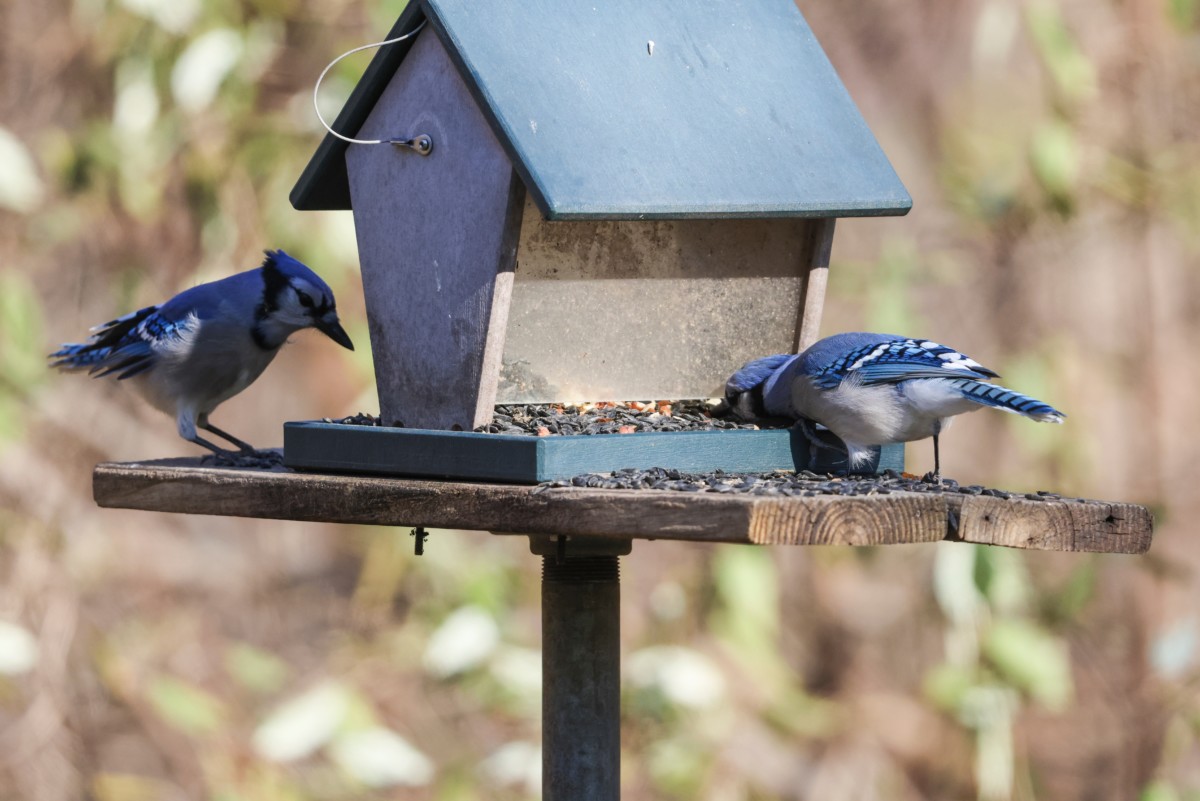
We’ve already discussed why having blue jays around is beneficial, so why not give them their own feeder. Set up a feeding station for blue jays far away from the feeders you’ve sanctioned as ‘small birds only.’ Encourage them to stick to this area by offering a seed mix with everything they love – peanuts, millet, cracked corn and sunflowers.
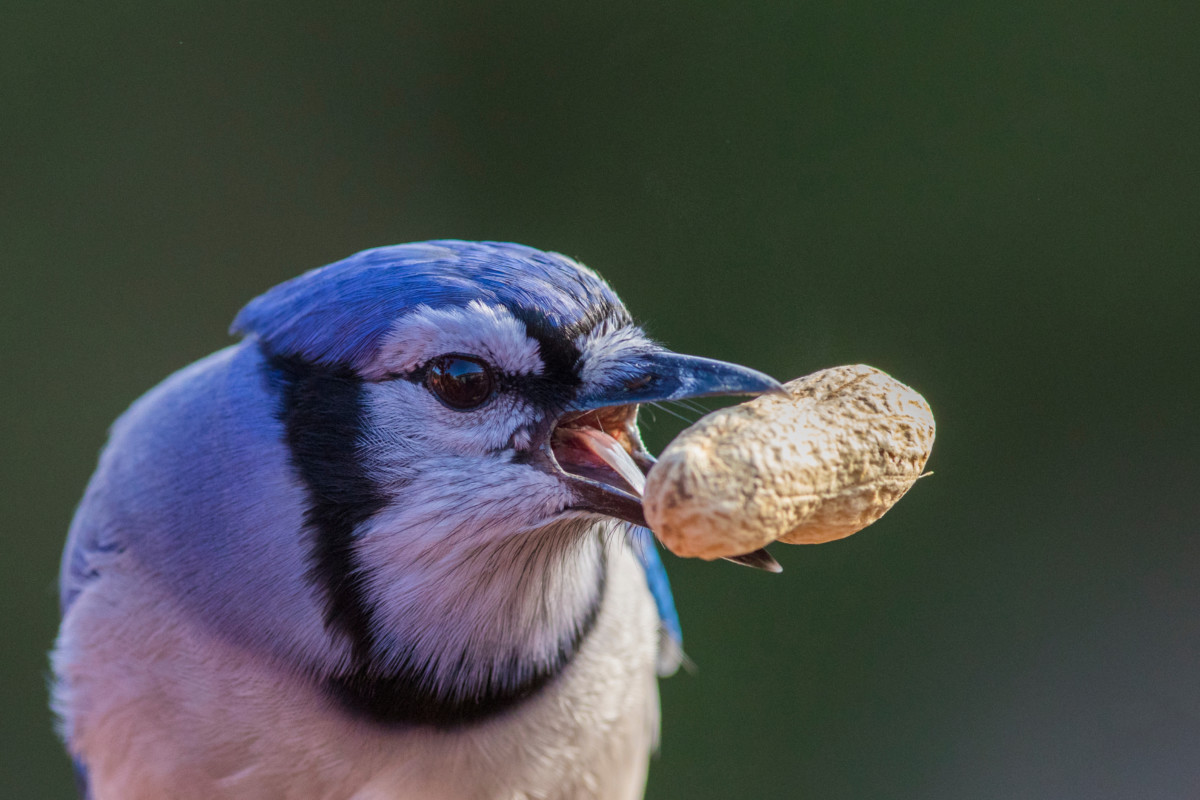
If blue jays have a reliable food source that is always full, they will guard it jealously and leave your smaller birds alone. They will still be in the area, though, offering the security of their presence.
To be sure they stay away from other feeders, you may wish to give them their own bird bath as well, as blue jays will guard water sources too.
Birds are Birds
In the end, we must remember when inviting wild animals into our space, they will act like wild animals. It’s not our place to try and change that behavior or to step in and interfere. By hanging bird feeders in our backyards, we are asking for a closer look at the nature of these birds just as they are.
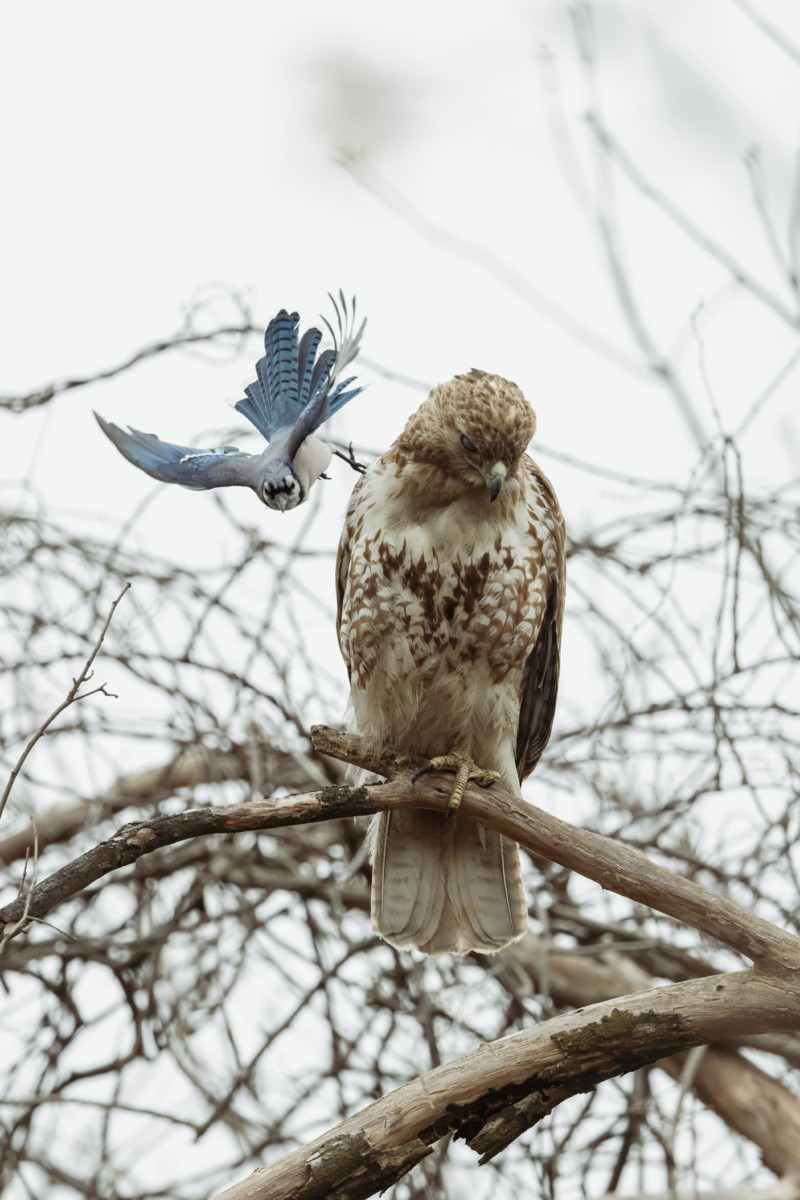
And while it can be frustrating to see blue jays scatter your smaller birds away from a feeder, it isn’t ‘mean’; it just is. The day you stand at your window and watch a mob of blue jays take on a hawk, you might be tempted to change ‘mean’ to ‘brave.’ Yet even this is a human characteristic. Those blue jays are just being blue jays, as nature intended.
Next, learn how easy it is to attract cardinals to your yard.

Get the famous Rural Sprout newsletter delivered to your inbox.
Join the 50,000+ gardeners who get timely gardening tutorials, tips and tasks delivered direct to their inbox.

